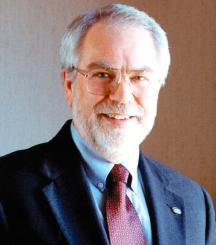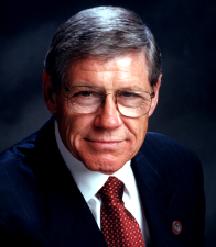[The Montana Professor 17.1, Fall 2006 <http://mtprof.msun.edu>]

Geoffrey G. Gamble
President
Montana State University

George M. Dennison
President
The University of Montana
When the Editorial Board of The Montana Professor elected to devote Volume 17 of the journal to the topic of academic responsibility, it envisioned a wide-ranging discussion of the many faceted roles and responsibilities of public higher education. This decision reflected a growing concern across the country about the health and vitality of higher education, particularly public higher education. A trend beginning in the late 1970s resulted by 2006 in severe erosion of state support for public higher education, with an accompanying rapid escalation in the cost burden for students and their families. At the same time, pundits and spokespeople from academia, government, business, and industry began to find fault with the quality and responsiveness of the education provided, warning about the impact on American competitiveness in a world increasingly "flat," in Tom Friedman's vivid metaphor. Adding to the cacophony of complaints, a plethora of critiques alleged detrimental impact of political correctness, increasing incidences of corruption, irresponsibility, and abusiveness of professors, unfairness and corrosive effects of race-related admissions and hiring standards, and encroachments of government and the market on the freedom to teach and learn. This litany of concerns does not include every issue raised, but it provides a sense of the hostile environment in which public higher education today seeks to define and discharge its responsibilities.
In direct response, several national groups and organizations have called for action to deal with a deteriorating situation. The American Council on Education rallied other organizations to issue a statement designed to prevent the adoption of Student or Academic Bills of Rights in a number of states. In addition, the ACE conceived of and implemented a national campaign to foster re-investment in public higher education entitled "Solutions for our Future." Several distinguished panels urged reform within higher education to enhance its quality and responsiveness, while also calling for investments to maintain American competitiveness and national security. The National Association of State Universities and Land-Grant Colleges specifically advocated for voluntary efforts by academe to demonstrate the value added by higher education--i.e., outcomes in terms of student learning. The Editorial Board made its decision within this context of heightened concern and awareness.
As Guest Editors, we have enjoyed the expert assistance of the Editorial Board as we planned and developed this and the Spring issue of The Montana Professor. We intended to offer a varied discussion of the roles and responsibilities of stakeholders, participants, and providers of public higher education, beginning at the broadest level and then sharpening the focus to institutional and individual concerns. However, the articles appear in the issues to some extent as they took final shape rather than in a pre-established sequence. Thus, the focus shifts within each issue from the societal to the individual levels of concern. We believe, however, that a careful reading of the articles and the reviews will afford a good foundation for a fruitful public dialogue about the state of public higher education in Montana.
This issue opens with a tribute to one of the authors who made an important contribution to the discussion. Kermit Hall, President of the University at Albany, SUNY, suffered a heart attack while swimming and never recovered. As Professor Michael Mayer so eloquently comments, with Kermit's passing academe has lost a sophisticated and distinguished scholar and an excellent academic leader. We dedicate this issue of TMP to his memory.
Brit Kirwan opens the discussion by providing an overview of the historical career of the "social contract" concerning public higher education. In its simplest form, the social contract refers to the felt obligation of the current generation to educate the next generation. Kirwan emphasizes the importance of the contract in the development of American public higher education, and warns of a failure to revive it.
The next three pieces focus on significant issues or aspects of higher education, not just public higher education. Thomas Bertonneau recalls for us the ideal of academia, the life of the mind and the love of learning. Daniel Taylor explains how Honor Codes can enrich the academic experience for students and faculty alike. And, finally, relying on research data, Judith Fischer warns of the consequences of uncritical reliance on student evaluations of teaching.
The final six pieces focus sharply on the current cause celebre in higher education. David Horowitz explains what he has in mind with his "Academic Bill of Rights," arguing that it falls well in line with the stated principles of academics, and emphasizes the imperative need for student grievance procedures. Roger Bowen takes issue directly with Horowitz's purpose and alleged motives from the perspective of the American Association of University Professors. Anne Neal addresses similar issues as they have emerged during the period since 9/11, urging consistency in the implementation of the existing standards of academic freedom and professional responsibility, and reviewing survey data to indicate that problems of irresponsibility exist. The ACE statement of rights and responsibilities seeks to provide an integrated context for the application of the principles of institutional autonomy and the freedom to learn and to teach. Finally, Kermit Hall finds the current debate largely irrelevant, and urges a focus on the larger question of the intellectual bases for academic freedom and limited institutional autonomy within an international context.
We believe this issue offers food for thought and, as mentioned, provides a foundation for a continued dialogue. The discussion will continue in the next issue. We invite our readers' participation.
[The Montana Professor 17.1, Fall 2006 <http://mtprof.msun.edu>]